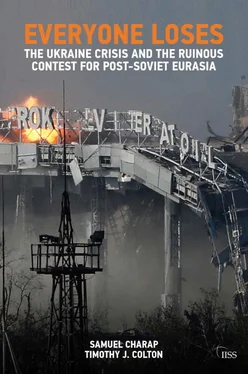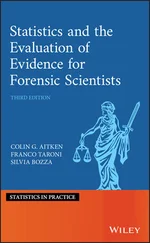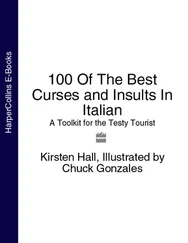Although, as noted above, Russia’s regulatory- and trade-policy convergence efforts with Brussels were still more advanced than those of its neighbours in 2005, that balance shifted briskly as its relationship with the EU deteriorated. Solana recalls ‘holes’ emerging in the Four Common Spaces programme ‘very soon’ after its adoption, and notes that within two years relations were at an impasse. [54] Authors’ interview with Javier Solana, June 2016.
At the same time, the EU’s relations with some of the In-Betweens, particularly Ukraine, grew closer. The 2004 big-bang enlargement, adding ten new member states with 80m citizens, was a factor. Belarus, Moldova and Ukraine (particularly after Romania’s EU accession in 2007) now bordered EU members to the west. This subjected them to the ‘shadow effect’, as Tom Casier calls it, that the EU has on its neighbours: both through the externalisation of internal policies (e.g., product standards imposed on imported goods) and through the ‘gravitational pull’ of its prosperity and good governance, the EU unintentionally has a bearing on proximate states ‘because of its mere existence’. [55] Tom Casier, ‘The Clash of Integration Processes? The Shadow Effect of the Enlarged EU on Its Eastern Neighbours’, in Katlijn Malfliet, Lien Verpoest and Evgeny Vinokurov (eds), The CIS, the EU and Russia: The Challenges of Integration (Basingstoke: Palgrave Macmillan, 2007), p. 74.
The EU had also just launched the ENP, and was intentionally acting to influence the political economy of its neighbours. As was the case with NATO, the new East Central European members altered the balance within the Union’s bureaucracy and political bodies in favour of more interaction with the neighbours and more distance from Russia.
The geo-economic form of EU engagement with the In-Betweens set the stage for a clash with Russia. After the PCAs of the 1990s expired (most had a lifespan of ten years), Brussels settled on Association Agreements (AAs) as the framework for drawing in those states in the region that aspired to integrate with the EU. The AAs feature Deep and Comprehensive Free Trade Area agreements (DCFTAs) at their core. The AA was explicitly an alternative to full EU membership, but it was nonetheless based on the core bargain of the accession process. The EU opens itself to aspirant countries (via visa-free travel, lowered trade barriers, access to internal preferences for everything from education to government procurement) in return for their conformity to the three Copenhagen Criteria (named for the city where they were agreed in 1993): consolidation of democratic institutions and protection of human rights, a market economy, and adoption of the acquis , the body of EU laws and regulations. In practice, the emphasis has always been on the third of these.
It should be stressed that fully fledged accession has never been an option for the In-Betweens. But the geo-economic distinction between full membership and the AA/DCFTA model is less ironclad on closer inspection. The AA obliges aspirant countries to change a vast array of standards, regulations and laws to conform with those enshrined in the EU acquis . It further prescribes that their future legislation be compatible with the acquis ; future EU decisions regarding issues covered by the AA must be enforced by the aspirant country. Over time, the AAs would, if implemented, fold these countries into the EU’s geo-economic space.
The AA also has shades of geopolitics, even if of the dull, procedure-obsessed EU variety. It creates a ministerial-level Association Council, which gathers regularly and is invested with the power to make decisions regarding AA implementation; a senior-official-level Association Committee; a Parliamentary Association Committee, composed of parliamentarians from the EU and the partner; a Civil Society Platform; and sector-specific committees. All these bodies have equal EU and partner-state representation. In the case of Ukraine, there are also summit meetings at the presidential level.
As Romano Prodi, former president of the European Commission, put it, the AA/DCFTA model provides these countries with ‘everything but the institutions’, full integration with the Union but no direct participation in the decision-making bodies in Brussels. [56] Romano Prodi, ‘Europe and the Mediterranean: Time for Action’, Speech, Université Catholique de Louvain-la-Neuve, 26 November 2002, http://europa.eu/rapid/press-release_SPEECH-02-589_en.htm .
A country that fully implements the AA would become like Norway, which remains outside the EU but as a member of the European Economic Area (the EU’s single market) must comply with the acquis . The main practical difference is that Oslo, unlike member-state capitals, cannot take part in EU policymaking.
The requirement to adopt the acquis was a powerful lever for reforming the domestic political economies of the new EU members in East Central Europe. So it was perfectly understandable that the EU chose to make this same compendium of rules its primary means of engagement with the In-Betweens, all of which are urgently in need of reform. But the AA does not just spur reform; it is also a geo-economic and geo-ideational exercise. On the macro level, the DCFTA precludes membership of any other customs union (including, as we shall see, the one Russia began ginning up in the same period); put differently, membership of a customs union precludes signing the DCFTA. Classic customs unions oblige members to relinquish national decision-making on tariffs and related matters to a supranational body; the DCFTA by definition requires signatories to maintain such prerogatives for themselves. The inherent take-it-or-leave-it and one-size-fits-all nature of the DCFTA also eliminates the intermediate option many states pursued before: some meshing with both Russia and the EU. It would leave states highly integrated with the EU, while commercial links to Russia (and other CIS countries) would attenuate over time. All 12 non-EU former Soviet republics had, since 1992, shared the same regulatory and technical standards, measurements and certification formats. [57] These are administered by the CIS Interstate Council for Standardization, Metrology and Certification, which has a coordinating body in Minsk. Interestingly, all 12 non-Baltic former Soviet republics, including non-members of the CIS, are represented on the Council. See the Council’s website for more information: http://www.easc.org.by/ .
If one of them were to replace these with (more rigorous) EU standards, its trade with the EU would be facilitated, while trade with other CIS countries could be hindered relative to the status quo ante. And given the nature of the agreement, AA signatories would have to adapt to many EU economic-policy decisions in the future. Brussels would gain pre-eminent influence over policymaking in signatory countries, displacing the influence of any other outside actor. The EU operated on the assumption that its normative hegemony was unassailable.
Russia was anything but welcoming of this new EU activism. But Brussels acted as if Russia did not exist. There were no consultations with Moscow, even though Russian officials had begun to object stridently. The hypersensitivity over steps that could evoke the ghosts of Yalta effectively ruled out conversing with Russia about Ukraine or any other In-Between. In fact, doing so would not have been unprecedented. On the eve of the admission of the Baltics and five other ex-communist countries in 2004, extensive trilateral negotiations had taken place among the EU, Russia and the soon-to-be members. Adjustments were made to accommodate Russian concerns, ranging from an extended adjustment period on aluminium exports to Hungary to special transit arrangements between the exclave of Kaliningrad and the rest of Russia. [58] ‘Joint Statement on EU Enlargement and EU–Russia Relations’ (European Union, 27 April 2004), http://www.enpi-info.eu/library/content/joint-statement-eu-enlargement-and-eu-russia-relations . See also Holger Moroff, ‘EU Policies toward Russia’, in Katlijn Malfliet, Lien Verpoest and Evgeny Vinokurov (eds), The CIS, the EU, and Russia: The Challenges of Integration (Basingstoke: Palgrave Macmillan, 2007).
Читать дальше











